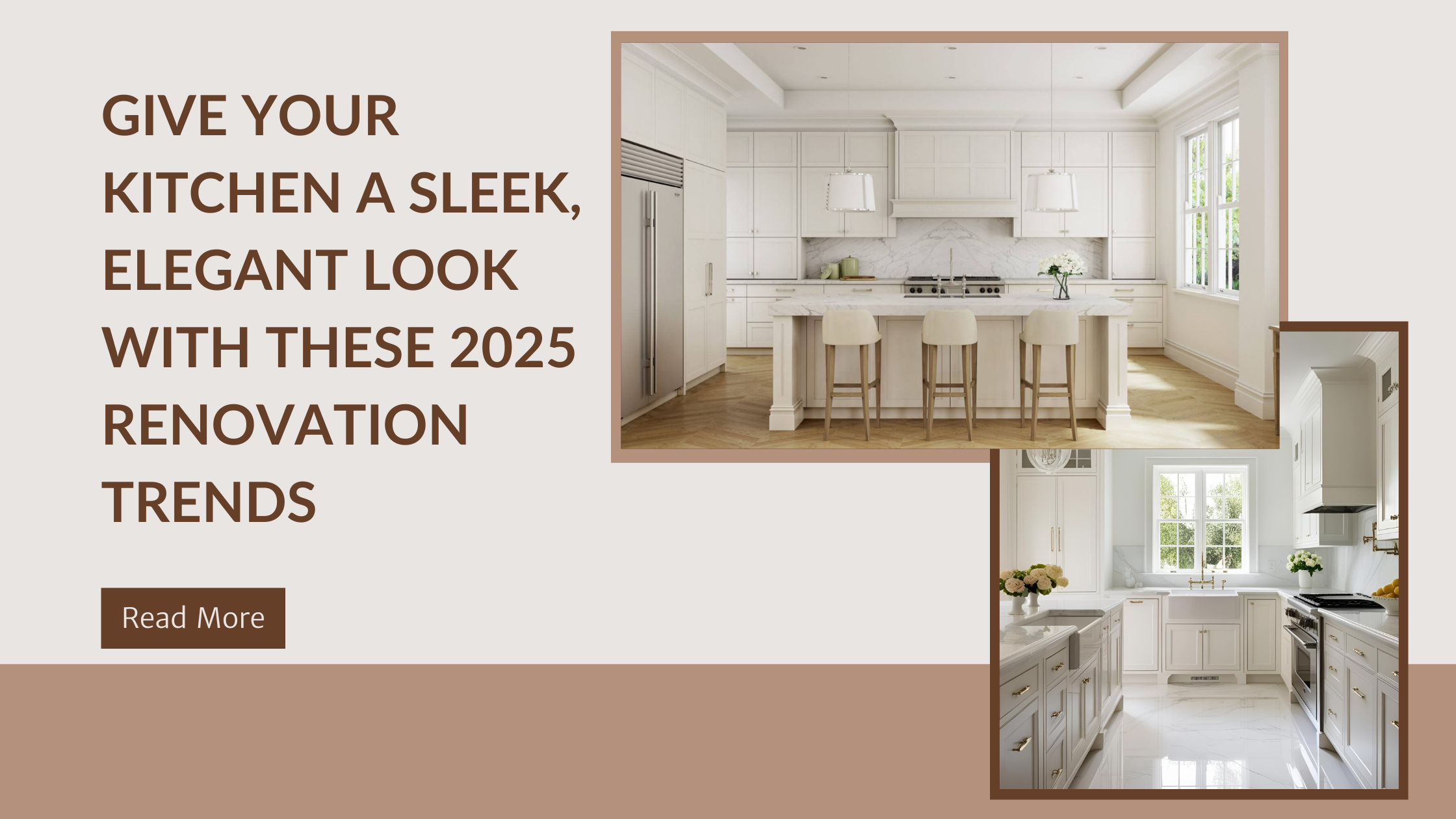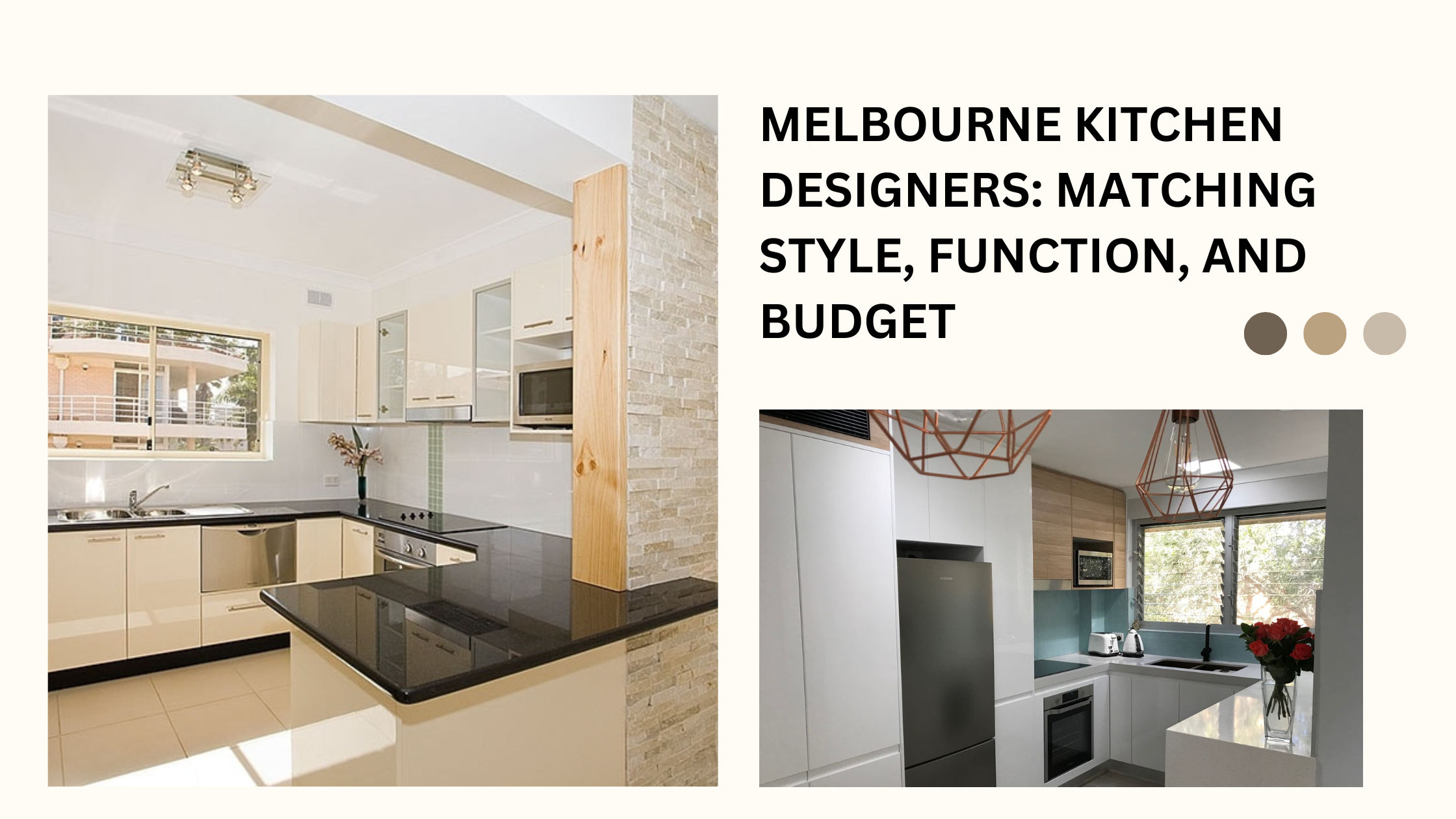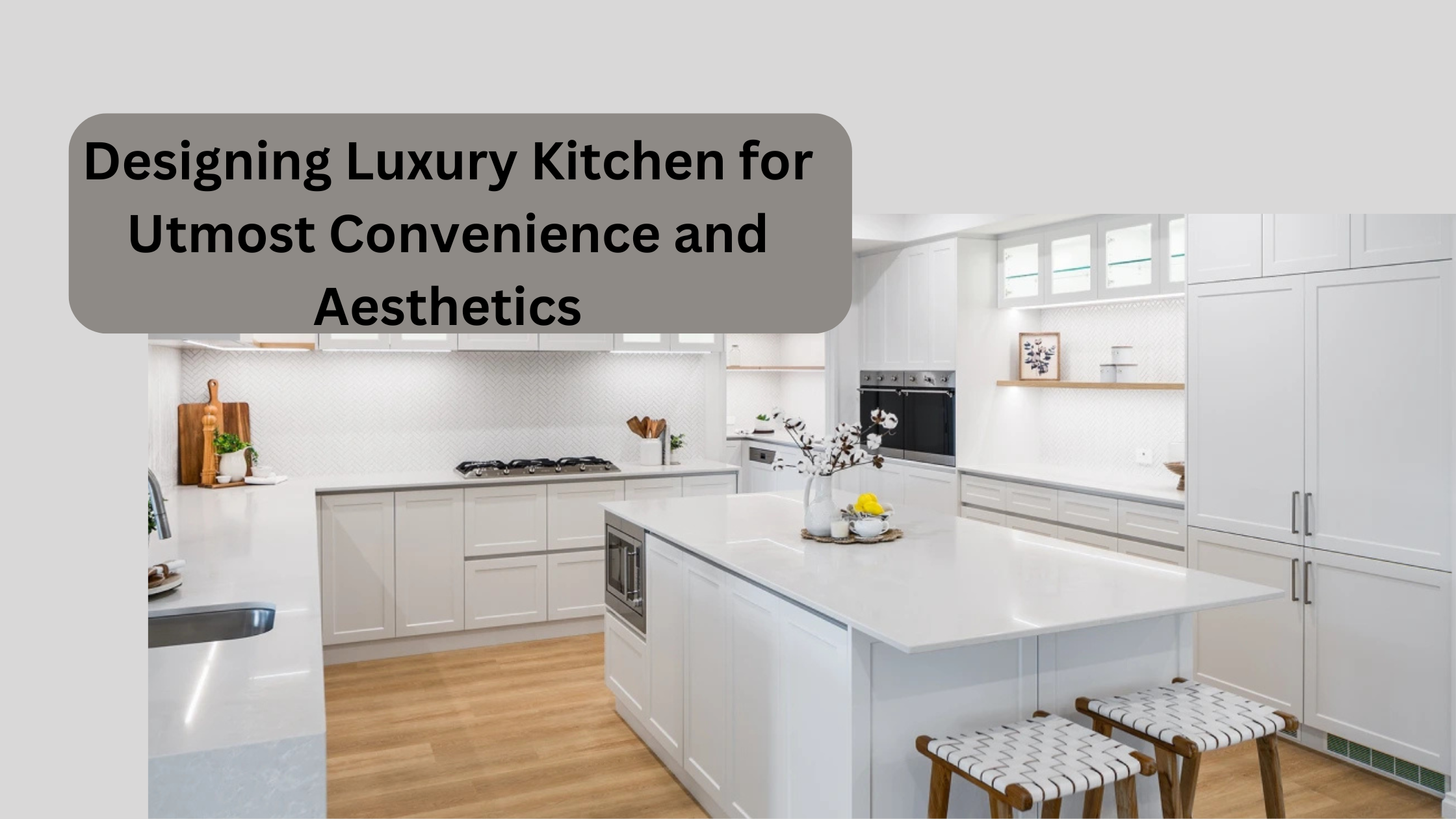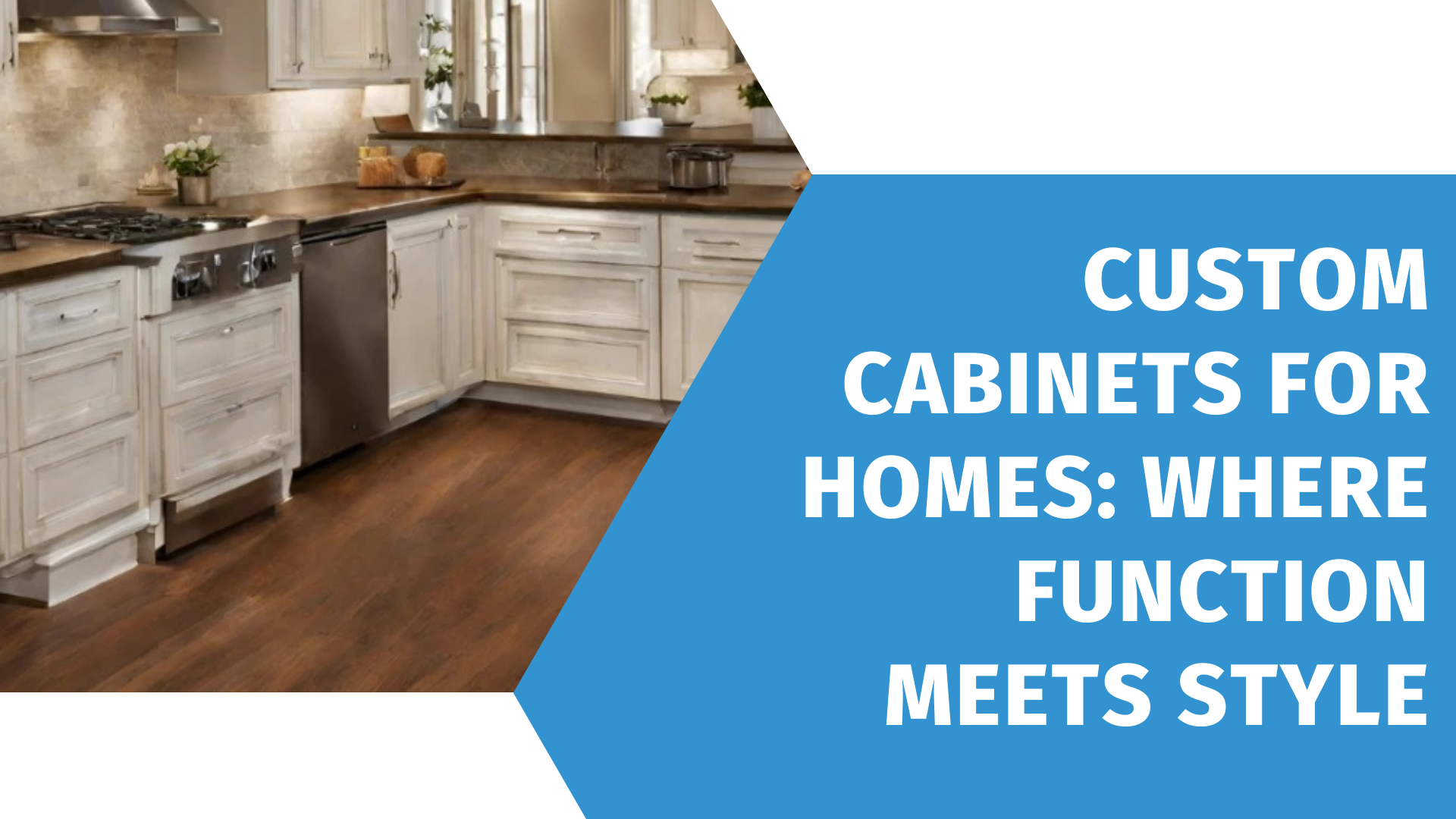Deciding the right flooring is a vital part of any kitchen renovation! Kitchen floors withstand constant staining, water spills, temperature fluctuations, cleaning, etc. Thus, the focus should be to install high-quality and durable kitchen floors that will serve you for many years without any hassles. That does not mean that they can’t look elegant!
Well, many choices exist when it comes to kitchen flooring; however, we have included in this blog some highly sought-after flooring options only.
Laminate Flooring
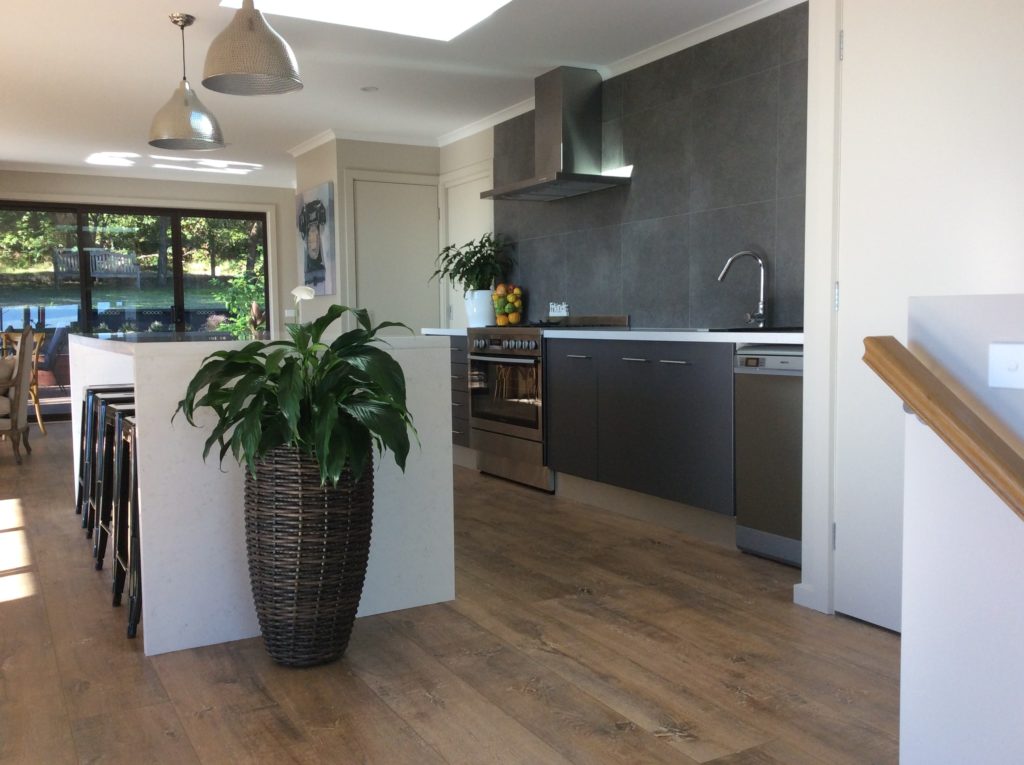
Laminate is an inexpensive option compared to hardwood flooring. These days, you get both non-waterproof and waterproof laminate variants. Besides, laminate can easily imitate the look of hardwood for a low cost. Moreover, laminate flooring is also an excellent DIY material.
Benefits
- You will get waterproof material if you use a special kind of laminate.
- It can imitate pricier materials.
- It is suitable for DIY, but if you are not comfortable with DIY, hire a professional to provide a flawless installation.
Drawbacks
- All kinds of laminates aren’t waterproof. So you’ll need to choose carefully for waterproofing.
- Laminate may not be as robust and durable as other alternatives.
Vinyl Flooring
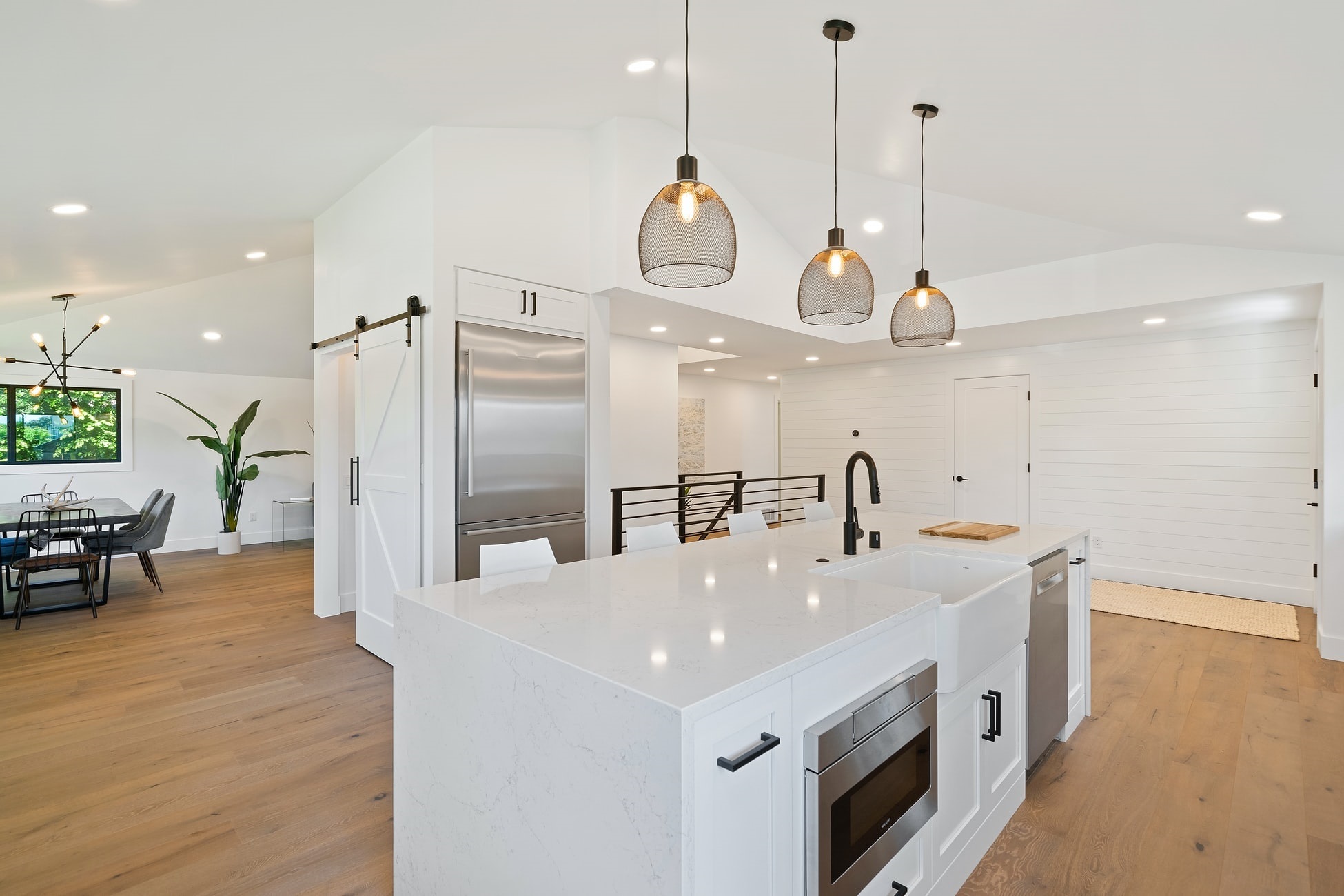
Due to the modern adornments Vinyl flooring has received in recent years, it has witnessed a revival. Besides, you get engineered kitchen vinyl flooring nowadays in planks and tiles imitating the exact look of stone and hardwood. It provides you with a bouncy feel underfoot, is completely waterproof, and is super easy to clean. Well, if you want to DIY, then it is amongst the best kitchen flooring options available on the market right now. Vinyl is another inexpensive flooring option.
Benefits
- It is fully waterproof.
- It can replicate pricier material.
- You can DIY, as professional install is not required. However, if you don’t want to take the pains of DIY, it is better to hire a professional to render a flawless installation.
Drawbacks
- Not as robust as tiles.
- It is susceptible to dents and scratches. It is a soft material, large appliances can scratch or dent it, so when moving or upgrading things in your kitchen, you need to do it carefully.
Cork Flooring
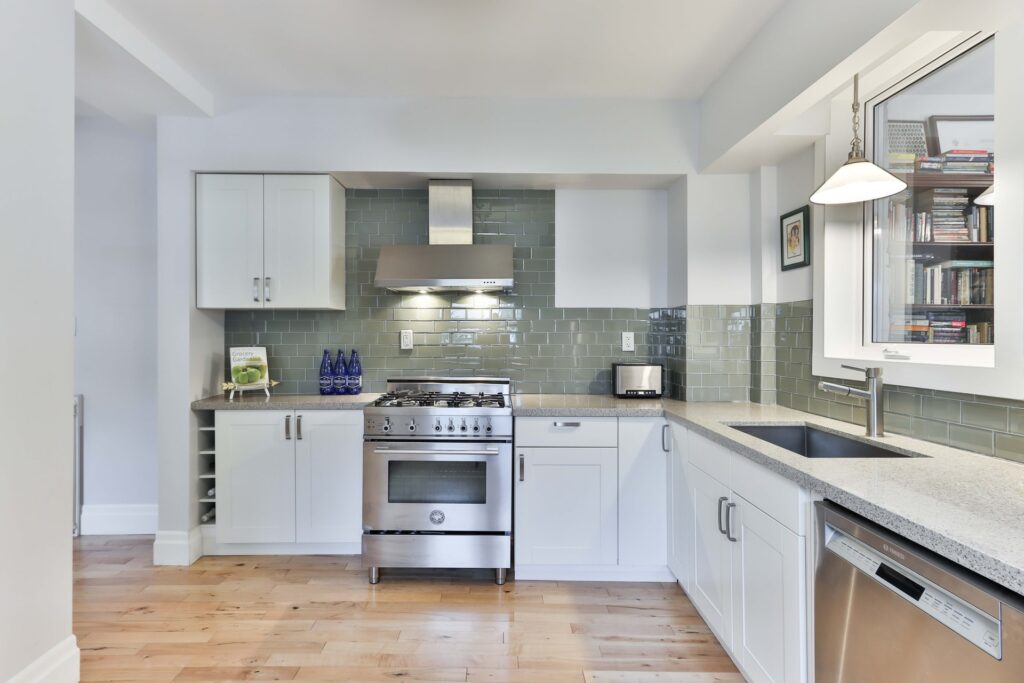
Cork is a new add-on to the kitchen flooring market, and it’s another fantastic cost-effective DIY option. You can purchase cork flooring as glue-down, snap-together, or peel and stick assembly to resemble planks or tiles. Cork won’t feel cold to the touch, and it has a soft, even bouncy feel, making it an excellent option for absorbing sound.
Cork flooring is available in diverse shades of brown and grey. Though cork flooring can resist stain, it isn’t waterproof. Clean up liquid spills before they can soak in. Nonetheless, if it does get stained, you can sand down cork flooring and then retouch it with stain and sealer.
Benefits
- Cork flooring can absorb sound.
- It is inexpensive flooring material to purchase.
- It is a DIY thing.
Drawbacks
- Cork material can fade by the sunlight. So you’ll have to put on the curtains during the daytime to protect it from direct sunlight.
- Cork flooring material is vulnerable to dents and scratches, so move around things carefully.
Concrete Flooring
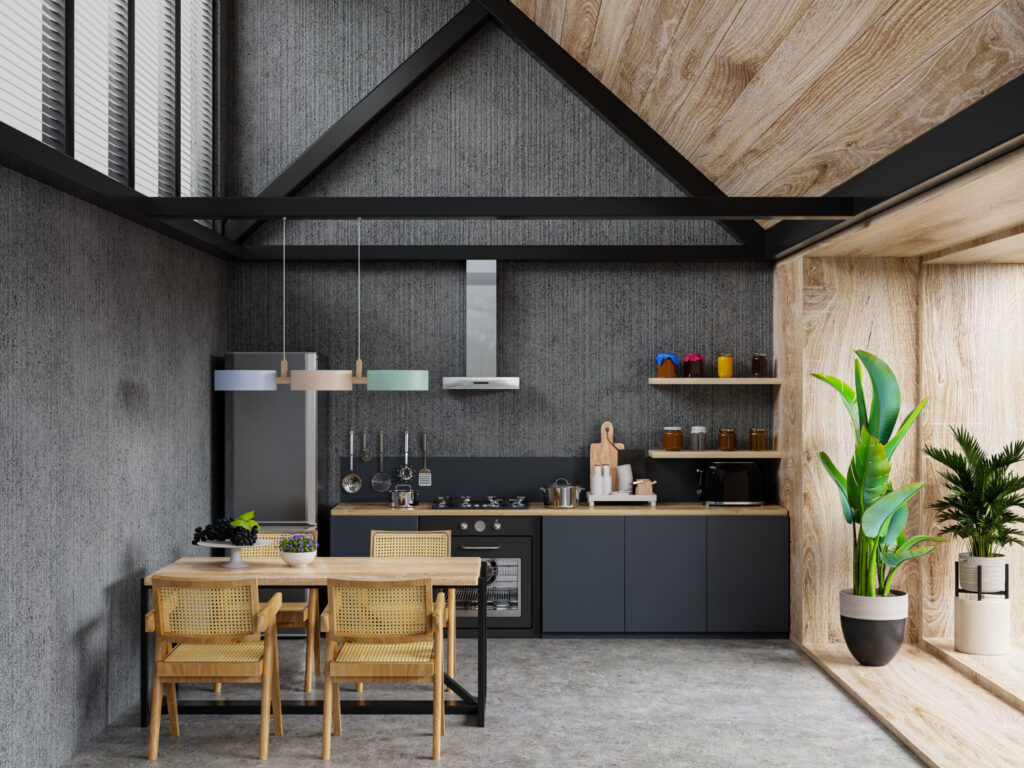
Concrete flooring is a robust and durable option for the kitchen. Stained concrete can be modified to look like stone, tile, or even wood and fully sealed for waterproofing. However, mats are perfect around the excessive moisture area, such as in front of the dishwasher or sink. Concrete is a super cheap flooring alternative, and as it can be tweaked to resemble something else, it won’t look like a budget material at all.
Benefits
- Concrete flooring is waterproof.
- It is an inexpensive yet more durable material.
Drawbacks
- It won’t look as stylish as some other options.
Hardwood Flooring
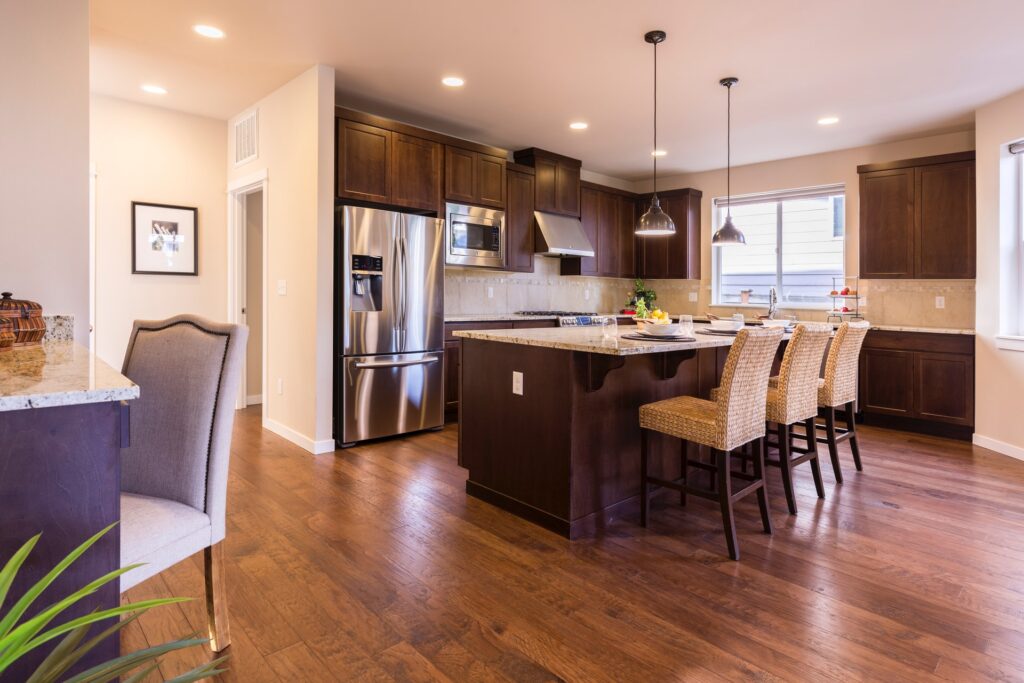
Hardwood flooring is one of the traditional options and is still widely in use for kitchen flooring nowadays. Solid hardwoods with the proper finish are water-resistant. And any spills ought to be cleaned up right away to avert any damage. Hardwood floors can be re-coated to get a refreshed look. It is a convenient option if you’re performing a quick kitchen remodelling without renovating the entire floor. Your refinished hardwood floors will harmonise the renewed look of your kitchen interior.
Benefits
- You can refinish hardwood easily to give it a fresh new look.
- With hardwood, you’ll get many patterns and colour shades.
Drawbacks
- Hardwood is not waterproof.
- Hardwood can get slippery.
Tile Flooring
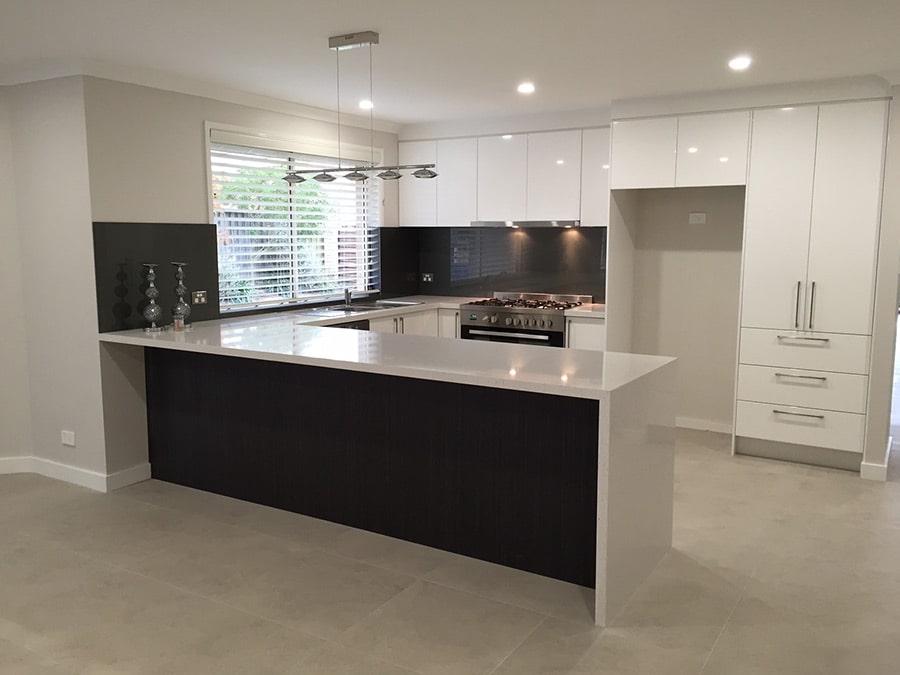
The kitchen and bathroom areas witness frequent water exposure, and tile flooring is the best option for such spaces. Stone, ceramic, and porcelain tiling are common choices for kitchen flooring options. Tiles are available in diverse colours, patterns, and sizes, and you can easily match them to any design theme, and they will look brilliant.
Tiles have a superb lifespan, but you will need to reseal the grout to keep it stain-resistant. Depending on your use pattern, you may need to reseal the grout once in six months or annually, or every two years. Allow only expert professionals to perform floor tiling. If you’re looking for a non-slip kind of tiling, then opt for stone tiles because they have a porous surface and will provide better slip resistance.
With proper care, stone tiling can be as robust as other types of tiles; however, it can get pricier than ceramic and porcelain. Stone tile used in flooring includes marble, granite, slate, and travertine.
Benefits
- Tiling is very durable.
- You will get many patterns and colour selections.
- Tiles are waterproof.
Drawbacks
- Tiles need some maintenance at regular intervals.
- Tiles can get slippery.
- Tiles need professional installation.
Touch Base with Konnect Kitchens!
If you’re looking for a complete kitchen renovation, semi-kitchen renovation, or part kitchen renovation in Melbourne, call the kitchen renovation specialists, Konnect Kitchens, on 03 9796 3337, or get a kitchen quote online. One of our experienced and friendly teams will be delighted to serve you.
